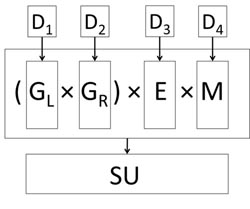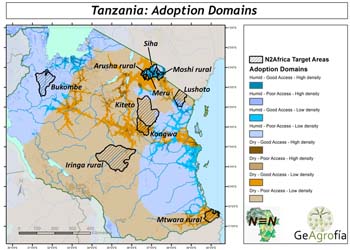The successful proposal of Phase II of N2Africa has given us an opportunity to select sites for the new countries in N2Africa to maximise the relevance of the research findings for different environments and communities. Since the middle of 2013 I have been collating information and reviewing the literature to identify the major factors that promote or hinder the adoption of grain legumes in sub Saharan Africa.
The purpose of the review was to develop the conceptual framework (Figure 1) on grain legume yield and biological nitrogen fixation at scale, and guide the choice of variables that need to be considered when characterising a new context. The report on the identification of factors that condition adoption, and how they can be managed within the research design of Phase II of N2Africa was published in March 2014. The findings of this report were then applied to the three new countries: Ethiopia, Tanzania and Uganda.
|
Figure 1. Grain legume yield and biological nitrogen fixation at scale, where D1 is the delivery of / availability of legume genotypes; D2 is the delivery of / availability of strains of rhizobium; D3 is the delivery / availability of other inputs; D4 is the delivery of / knowledge of management practices, and; SU is the marketing for sale and utilisation of the legume crop. |
Figure 2. Adoption domains for groundnuts in Tanzania |
Spatial data were sought for each country to develop adoption domain maps (see Figure 2 for an example) that could be used to characterise the major legume growing areas of each country and select sites for subsequent N2Africa field and business activities. The reports for Ethiopia, Tanzania and Uganda have recently been published (June 2014) on the N2Africa website and the spatial data are now being organised and will soon be available for download.
Andrew Farrow, GeAgrofía


